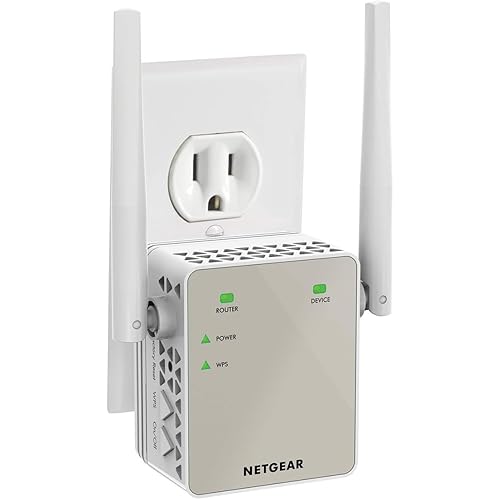TP-Link Deco X55 Pro AX3000 Whole Home Wi-Fi 6 Mesh System - Coverage up to 6500 Sq.Ft & up to 150 Devices, 2x2.5G WAN/LAN Ports, 4 Streams, Wired Ethernet Backhaul, Ideal for 1Gig+ Internet, 3-Pack










Buy Now, Pay Later
- – 6-month term
- – No impact on credit
- – Instant approval decision
- – Secure and straightforward checkout
Ready to go? Add this product to your cart and select a plan during checkout.
Payment plans are offered through our trusted finance partners Klarna, Affirm, Afterpay, Apple Pay, and PayTomorrow. No-credit-needed leasing options through Acima may also be available at checkout.
Learn more about financing & leasing here.
Selected Option
FREE 30-day refund/replacement
To qualify for a full refund, items must be returned in their original, unused condition. If an item is returned in a used, damaged, or materially different state, you may be granted a partial refund.
To initiate a return, please visit our Returns Center.
View our full returns policy here.
Recently Viewed
Style: AX3000 Pro w/ Dual 2.5G Ports
Size: 3 Pack
Features
- Wi-Fi 6 Mesh: AX3000 whole home Wi-Fi 6 mesh system eliminates weak Wi-Fi for good (22/HE160 2402 Mbps plus 22 574 Mbps)
- 2.5G Multi-Gigabit Connectivity with Pro: Each unit has 2 x 2.5G Gbps Ports. Ideal for internet subscriptions above 1 Gigabit and supports superior wired ethernet backhaul, and multi-gig device connectivity such as NAS.
- Whole Home WiFi Coverage: Covers up to 6500 square feet of seamless high-performance Wi-Fi 6 and eliminates dead zones and buffering. Performs better than traditional Wi-Fi boosters and range extenders
- Connect More Devices: The Deco X55 Pro (3-pack) is powerful enough to connect more than 150 devices with strong and reliable Wi-Fi
- Our Cybersecurity Commitment: TP-Link is a signatory of the U.S. Cybersecurity and Infrastructure Security Agencys (CISA) Secure-by-Design pledge. This device is designed, built, and maintained, with advanced security as a core requirement.
- AI-Driven Mesh: Intelligently learns the network environment to provide ideal Wi-Fi conditions unique to your home
- TP-Link HomeShield: TP-Link's premium security service keeps your home network safe. Free features: 1. Security Scan and IoT Device Identification 2. Parental Controls 3. Quality of Service, and more.
- Easy Set Up and Management: Set up and manage your mesh router in minutes with the free Deco App available for both Android and iOS devices.
Description
TP-Link Deco WiFi 6 Mesh System(Deco X55 Pro) - AX3000, Covers up to 6500 Sq.Ft., 2 x 2.5 Gbps ports per unit, supports Ethernet Backhaul (3-pack) Deco X55 Pro is an upgrade of Deco X55 which Upgraded Ethernet port speed. It is ideal for the users who subscribed up to 2.5G Internet service. TP-Link offers 24/7 technical support and 2-year warranty for most home products,1 more year than most networking brands. Founded in 1996, TP-Link is a global provider of reliable networking devices and accessories, involved in all aspects of everyday life. With a proven heritage of stability, performance and value, TP- Link has curated a portfolio of products that meet the networking needs of all individuals. Now, as the connected lifestyle continues to evolve,the company is expanding today to exceed the demands of tomorrow.
Brand: TP-Link
Model Name: Deco X55 Pro
Special Feature: Access Point Mode, Guest Mode, QoS
Frequency Band Class: Dual-Band
Wireless Communication Standard: 802.11a, 802.11ac, 802.11ax, 802.11b, 802.11n
Compatible Devices: Iphone, Smartphone, Tablet
Recommended Uses For Product: Business, Gaming, Home
Included Components: 1 RJ45 Ethernet cable, 3 Deco X55 Pro units, 3 Power adapters, Quick Installation Guide
Connectivity Technology: Wi-Fi
Color: White/Black
Product Dimensions: 4.33 x 4.33 x 4.48 inches
Item Weight: 2.91 pounds
Item model number: Deco X55 Pro(3-Pack)
Date First Available: June 26, 2023
Manufacturer: TP-Link
Frequently asked questions
To initiate a return, please visit our Returns Center.
View our full returns policy here.
- Klarna Financing
- Affirm Pay in 4
- Affirm Financing
- Afterpay Financing
- PayTomorrow Financing
- Financing through Apple Pay
Learn more about financing & leasing here.
























